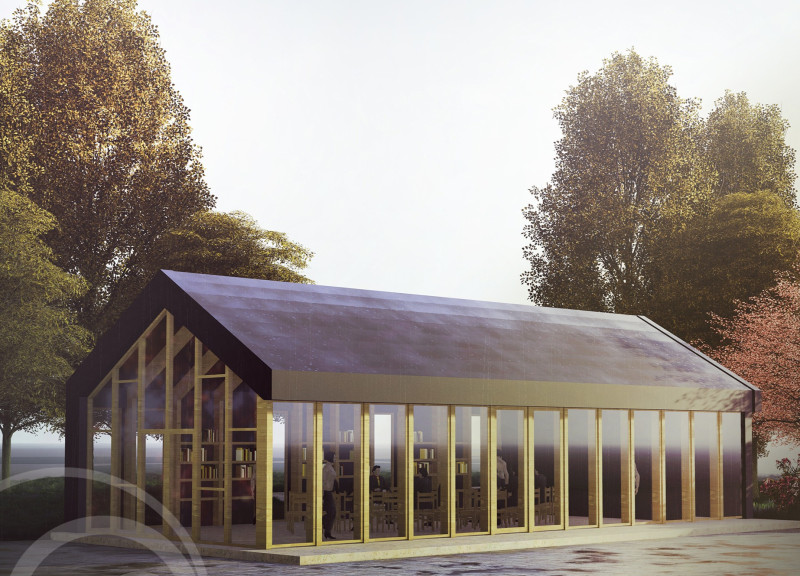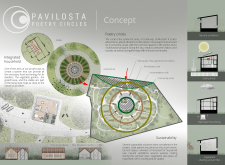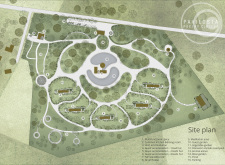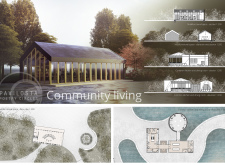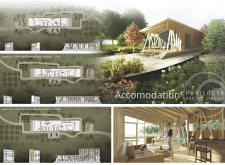5 key facts about this project
The Pavilosta Poetry Circles project focuses on creating a space that combines community living with attention to environmental sustainability. It operates within a context that emphasizes the connection between people and their surroundings. The design utilizes a circular layout to express themes of unity and continuity. This approach is intended to foster a cohesive living experience while allowing for various communal activities alongside individual privacy.
Conceptual Framework
The project features concentric circles that define different areas within the space. At the center is a multifunctional area that serves as a gathering place for social events and community interactions. This layout encourages a sense of belonging among residents and visitors, while also highlighting the importance of connectivity with the outdoor environment. The design balances shared spaces with private accommodations, catering to varied needs.
Sustainable Design Strategies
One of the key features is the use of natural ventilation to provide passive cooling. This strategy takes advantage of the natural airflow, helping to maintain comfort without relying heavily on energy use. Solar panels are placed on south-facing roofs to capture sunlight and generate energy efficiently. Additionally, rainwater harvesting systems are implemented to collect and utilize water, helping to reduce overall demand on local resources.
Landscape and Community Integration
Landscaping plays an important role in the overall design. Vegetable gardens, meditation areas, and communal outdoor spaces enhance not only the aesthetic value but also contribute to a self-sustaining lifestyle for residents. Facilities for domestic animals are included as well, reflecting an integration of agricultural practices within the community. This encourages a living experience that is closely tied to nature.
The design emphasizes a blend of built and natural environments. One notable aspect is the incorporation of vegetation for shading, enhancing outdoor comfort and promoting biodiversity across the site. This thoughtful integration encourages both ecological health and community interaction.


